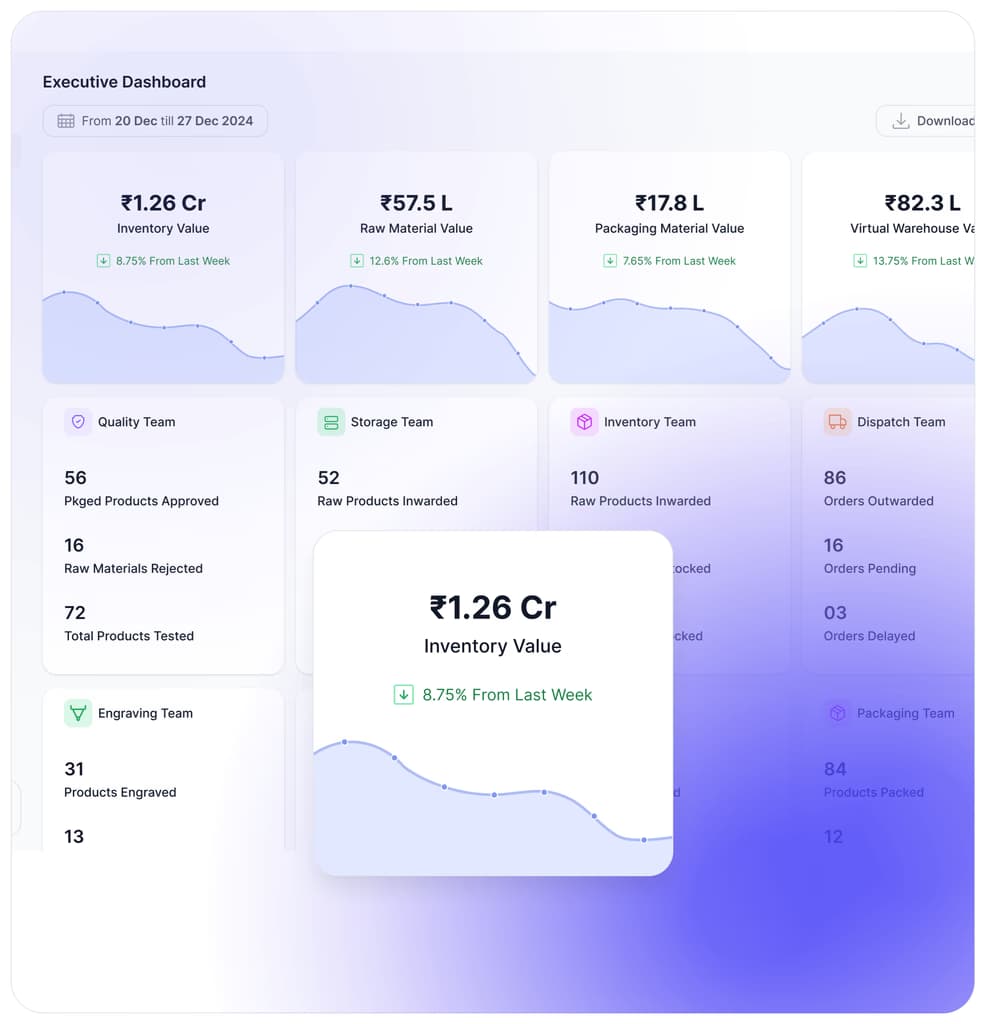Seasonal Demand Forecasting: Never Miss Another Diwali Rush
That ₹2 crore revenue spike during Diwali? It's predictable. Learn how AI-powered demand forecasting helps you capture every peak sales period while avoiding the costly inventory hangover that follows.

The ₹50 Lakh Seasonal Planning Mistake
The Festival Rush Reality Check
Last Diwali, while competitors ran out of stock by October 25th and watched customers go elsewhere, smart brands using FilFlo's seasonal forecasting captured an additional ₹50 lakhs in sales by having the right inventory at the right time.
Common Seasonal Planning Failures
- • Understocking: Missing 30-40% of peak demand
- • Overstocking: 60% inventory sitting post-festival
- • Wrong Mix: Popular items out, slow items stocked
- • Timing Issues: Stock arrives too late or too early
- • No Plan B: No strategy for excess inventory
Seasonal Success Indicators
- • 95%+ in-stock rate during peak periods
- • Minimal excess inventory post-season
- • 30-50% sales increase during festivals
- • Quick inventory turnover cycles
- • Positive cash flow throughout the year
How FilFlo's AI Predicts Your Next Big Season
Multi-Factor Seasonal Forecasting Engine
FilFlo analyzes multiple data sources to predict seasonal demand with 85%+ accuracy, giving you confidence to stock optimally for peak periods.
Historical Patterns
3+ years of sales data analysis with trend identification
Market Intelligence
Category trends, competitor analysis, economic indicators
External Factors
Weather, events, holidays, regional preferences
FilFlo's Festival Demand Prediction Dashboard
Peak days: Oct 28 - Nov 3
Recommended stock: 6x normal
Peak days: Feb 10-14
Recommended stock: 3x normal
Peak days: Mar 8-15
Recommended stock: 2.5x normal
Peak months: Nov-Feb
Recommended stock: 4x normal
Case Study: Fashion Brand's Diwali Success Story
The Challenge: Unpredictable Festival Demand
A premium ethnic wear brand struggled with seasonal planning. For three consecutive years, they either ran out of bestsellers during Diwali or ended up with 40% excess inventory in slow-moving styles.
2021: Understocked
2022: Overstocked
2023: With FilFlo
Key Success Factors:
- • Style-Level Forecasting: Predicted demand for each design and color combination
- • Regional Variations: Adjusted inventory based on local preferences (Gujarat vs. Bengal)
- • Price Point Planning: Balanced premium vs. mid-range inventory mix
- • Timeline Optimization: Phased inventory arrivals aligned with demand curve
- • Post-Season Planning: Built-in clearance strategy for remaining inventory
Understanding Indian Seasonal Retail Patterns
🎆Festival Season (August - December)
Peak Periods:
- • Ganesh Chaturthi: August (Regional spike in Maharashtra)
- • Navratri: September/October (Fashion & jewelry)
- • Diwali: October/November (All categories peak)
- • Wedding Season: November-February (Luxury items)
Planning Tips:
- • Start inventory buildup 60 days before
- • Focus on gift-worthy packaging
- • Plan for 3-5x normal demand
- • Prepare post-festival clearance strategy
🌧️Monsoon & Back-to-School (June - August)
Category Impact:
- • Apparel: Monsoon-appropriate clothing demand
- • Electronics: Laptops for students
- • Footwear: Waterproof options trending
- • Home: Monsoon-proofing products
Inventory Strategy:
- • Weather-appropriate product mix
- • Regional variation consideration
- • Student-focused promotions
- • Prepare for festival season buildup
☀️Summer & Slow Season (March - May)
Challenges:
- • Post-festival inventory clearance
- • Reduced consumer spending
- • Cash flow management critical
- • Preparation for next cycle
Optimization Focus:
- • Minimize carrying costs
- • Focus on essentials and basics
- • Summer-specific products
- • Plan for monsoon season
FilFlo's Advanced Forecasting Techniques
Multi-Model Forecasting Approach
Time Series Analysis
Analyzes historical patterns to identify trends, seasonality, and cyclical behavior.
- • ARIMA modeling for trend analysis
- • Seasonal decomposition
- • Exponential smoothing
Machine Learning
Advanced algorithms that learn from multiple variables and improve over time.
- • Random Forest regression
- • Neural networks for complex patterns
- • Feature importance analysis
Ensemble Methods
Combines multiple forecasting models for higher accuracy and reliability.
- • Weighted model averaging
- • Prediction interval estimation
- • Confidence scoring
Real-Time Forecast Adjustments
FilFlo continuously monitors actual sales vs. forecast and adjusts predictions in real-time.
Your 90-Day Seasonal Planning Roadmap
Phase 1: Data Collection (Days 1-30)
- • Historical Sales Analysis: Upload 2-3 years of transaction data
- • Product Categorization: Group products by seasonality patterns
- • External Data Integration: Connect weather, festival calendar, economic data
- • Baseline Establishment: Set normal demand levels for each category
Phase 2: Model Training (Days 31-60)
- • Algorithm Selection: Choose optimal forecasting models for each product
- • Feature Engineering: Identify key demand drivers and seasonality factors
- • Validation Testing: Backtest models against historical data
- • Accuracy Benchmarking: Establish forecast accuracy targets (80%+ goal)
Phase 3: Live Implementation (Days 61-90)
- • Forecast Generation: Produce first seasonal demand predictions
- • Inventory Planning: Create purchase orders based on forecasts
- • Monitoring Setup: Establish daily tracking and alert systems
- • Continuous Improvement: Monitor performance and refine models
Track Your Seasonal Success
Forecast Accuracy
Target: 85%+ accuracy rate
Sales Capture
Goal: 95%+ demand fulfillment
Inventory ROI
Aim: <10% excess post-season
Cash Flow
Maintain positive throughout year
Never Miss Another Peak Season
Stop guessing and start predicting. See how FilFlo's AI can forecast your next festival season with 85%+ accuracy.